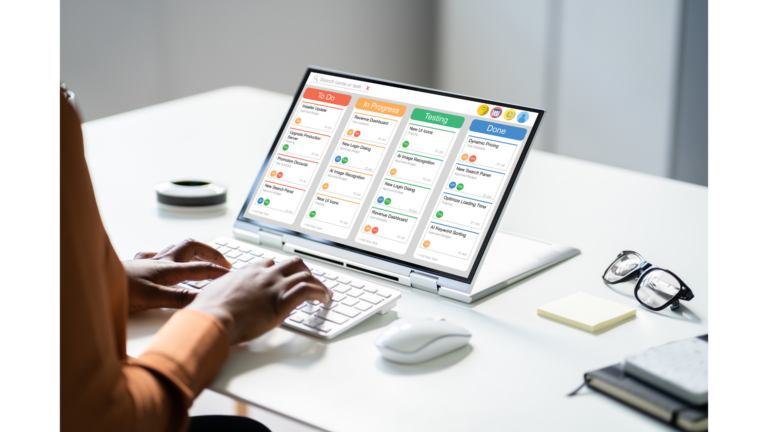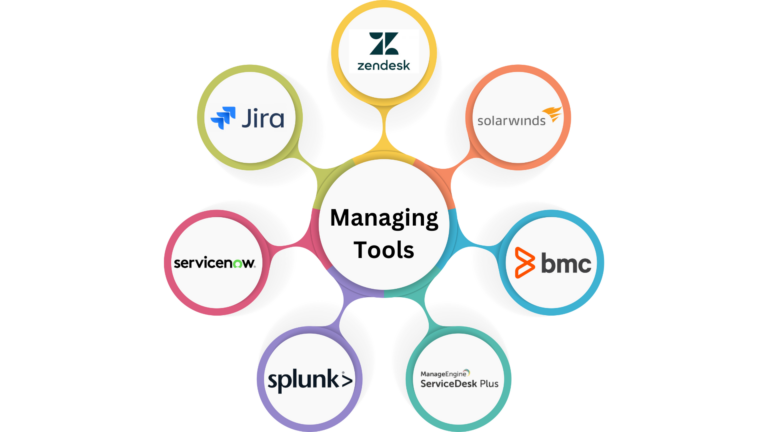INCIDENT MANAGEMENT
Incident management refers to the process of identifying, analyzing, and correcting hazards to prevent a future re-occurrence. These incidents can range from minor issues that cause brief interruptions to major problems that result in significant downtime or damage. Effective incident management ensures that normal service operations are restored as quickly as possible with minimal impact on the business.

Key Components of Incident Management
- Incident Identification: Recognizing and logging incidents as soon as they occur.
- Incident Categorization: Classifying incidents based on severity, impact, and urgency.
- Incident Prioritization: Determining the order in which incidents should be addressed based on their severity and impact.
- Incident Diagnosis: Analyzing the incident to understand its root cause.
- Incident Escalation: Escalating incidents to higher-level support if they cannot be resolved at the current level.
- Incident Resolution: Implementing solutions to fix the incident and restore normal service.
- Incident Closure: Verifying that the incident has been resolved and closing the incident record.
- Incident Documentation: Keeping detailed records of incidents for future reference and continuous improvement.
Steps in the Incident Management Process
- Detection and Recording: Incidents are detected through monitoring systems, user reports, or automated alerts and are then recorded in an incident management system.
- Classification and Initial Support: Incidents are categorized and prioritized. Initial support may involve basic troubleshooting and information gathering.
- Investigation and Diagnosis: Detailed investigation to diagnose the cause of the incident and identify potential solutions.
- Resolution and Recovery: Implementing the solution to resolve the incident and restore normal operations.
- Incident Closure: Ensuring the incident has been fully resolved, verifying with the user if necessary, and closing the incident record.
- Post-Incident Review: Analyzing the incident to understand what went wrong, what was done well, and how future incidents can be prevented or managed more effectively.
Essential Tools for Incident Management
There are several tools and software solutions designed to streamline and enhance the incident management process. These tools help in logging, tracking, managing, and resolving incidents efficiently. Here are some of the most commonly used tools for incident management:

1. ServiceNow
- Features: Incident tracking, problem management, change management, service catalog, automated workflows.
- Benefits: Extensive automation capabilities, integration with other IT service management (ITSM) tools, robust reporting and analytics.
2. Jira Service Management
- Features: Incident tracking, SLAs, real-time collaboration, automation rules, customizable workflows.
- Benefits: Integration with Jira software for development teams, user-friendly interface, scalable for different organizational sizes.
3. Zendesk
- Features: Ticketing system, incident tracking, customer support, multichannel support (email, chat, phone, social media), automated workflows.
- Benefits: Strong customer support focus, easy to use, extensive integration with other tools.
4. BMC Remedy
- Features: Incident management, change management, asset management, problem management, knowledge management.
- Benefits: Comprehensive ITSM solution, strong automation capabilities, extensive reporting and analytics.
5. Splunk
- Features: Incident tracking, log management, real-time monitoring, advanced analytics, automated responses.
- Benefits: Powerful analytics capabilities, real-time monitoring, extensive integrations with IT and security tools.
6. ManageEngine ServiceDesk Plus
- Features: Incident management, problem management, change management, asset management, automated workflows.
- Benefits: Affordable ITSM solution, easy to deploy and use, good integration with other ManageEngine products.
7. SolarWinds Service Desk
- Features: Incident management, service catalog, change management, asset management, automated workflows.
- Benefits: Comprehensive ITSM solution, strong reporting and analytics, integration with SolarWinds monitoring tools.
Choosing the Right Tool
Selecting the appropriate incident management tool depends on various factors, including the size and needs of your organization, budget, existing IT infrastructure, and specific requirements for incident management. Here are some considerations:
- Scalability: Ensure the tool can grow with your organization.
- Integration: Check if the tool integrates well with your existing systems and software.
- Ease of Use: Look for a user-friendly interface to facilitate adoption by your team.
- Customization: Assess the tool’s ability to be customized to fit your specific workflows and processes.
- Support and Training: Consider the level of support and training provided by the vendor.
- Cost: Evaluate the total cost of ownership, including licensing, implementation, and ongoing maintenance.
Each tool has its strengths and may be better suited to different environments and use cases. Evaluating these tools based on your specific needs will help ensure a successful implementation of your incident management processes.

Best Practices for Effective Incident Management
- Automate where possible: Use automated monitoring and alerting tools to quickly identify and respond to incidents.
- Maintain clear communication: Ensure all stakeholders are kept informed throughout the incident lifecycle.
- Regularly train staff: Keep incident management teams well-trained and prepared for various scenarios.
- Conduct post-incident reviews: Learn from each incident to improve processes and prevent future occurrences.
- Invest in robust tools: Use reliable incident management software to track, manage, and resolve incidents efficiently.
- Create detailed documentation: Maintain comprehensive records of incidents, resolutions, and lessons learned.
Incident Management Frameworks and Standards
- ITIL (Information Technology Infrastructure Library): Provides best practices for IT service management, including incident management.
- COBIT (Control Objectives for Information and Related Technologies): Offers a framework for developing, implementing, monitoring, and improving IT governance and management practices.
- ISO/IEC 20000: An international standard for IT service management, which includes requirements for incident management.
Conclusion
Incident management is a critical component of IT service management, ensuring that issues are resolved swiftly and effectively to maintain business continuity and service quality. By mastering incident management, businesses can not only mitigate disruptions but also build a resilient IT infrastructure that supports growth and innovation.
By – Mayank Gandhi